The beautiful landscapes of England are dotted with many glorious buildings. From cute timber-framed homes and rustic farmsteads to stately manor houses, monasteries, and medieval churches, the nation has plenty of gorgeous architecture. Beyond that, the country’s many castles are often especially appealing to visitors.
Here are some of the best castles in England:
1. Warwick Castle
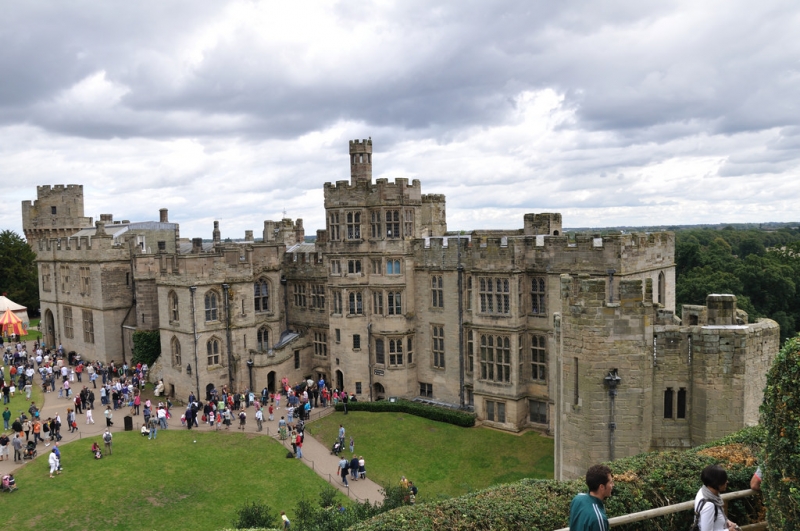
Image credit: gabriella szekely
A gigantic castle that can trace its history back to the times of William the Conqueror, Warwick Castle has been restored and renovated many times since its original construction. The medieval marvel was in use until the 17th century before being turned into a grand home. It is now open to the public and you can spend hours exploring the site, admiring the views, and viewing a range of exhibitions, Don’t miss seeing the impressive Warwick trebuchet, one of the biggest working siege engine in the world.
2. Framlingham Castle
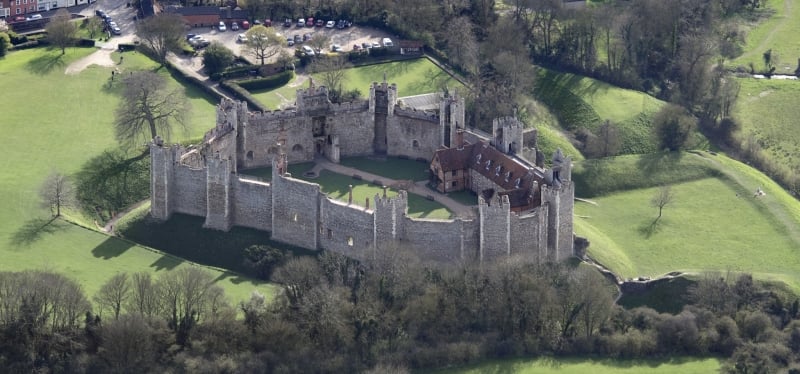
Image credit: John Fielding
Dating back to the 12th century, Framlingham Castle is a terrific historical attraction in Suffolk. Looking over the River Ore, the impressive castle has three distinct sections: the Bailey, the Lower Court, and the Inner Court. Walk along the mighty walls and soak up the history in the very spot where Mary Tudor (later known as Bloody Mary) became the Queen of England. There are often diverse activities and exhibitions.
3. Beeston Castle
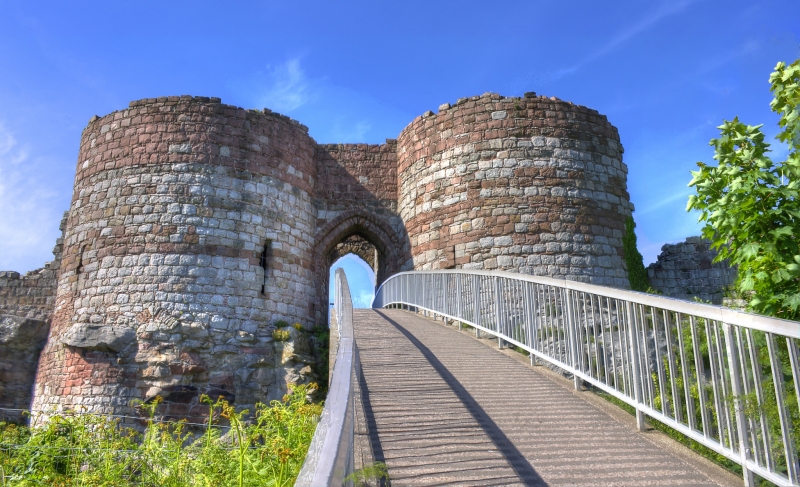
Image credit: Ian Miller
An imposing sight in the Cheshire countryside, Beeston Castle was formerly a royal fortress. It dates back to the 1220s and saw action in the English Civil War. The ruins are atmospheric and the elevated location provides stunning views that stretch far and wide. Access is along a long (but modern) bridge that spans the moat.
4. Windsor Castle
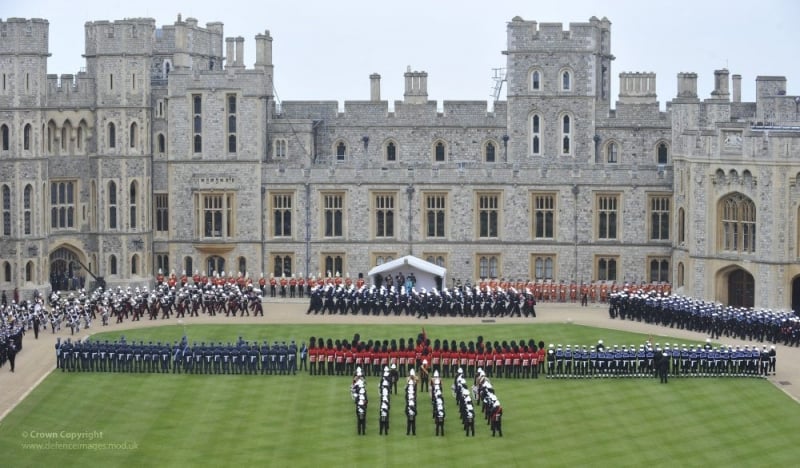
Image credit: Defence Images
The largest castle in England, Windsor Castle is the official residence of the British Queen. It was built in the 11th century following William the Conqueror’s invasion of the British Isles. Stroll along the Long Walk to fully appreciate the awesome building’s scale and grandeur. Parts of the building are open to the public, allowing you to peek inside opulent staterooms and admire the interior details and treasures. You can also enjoy the lovely gardens around the castle and watch the Changing of the Guard ceremony.
5. Arundel Castle
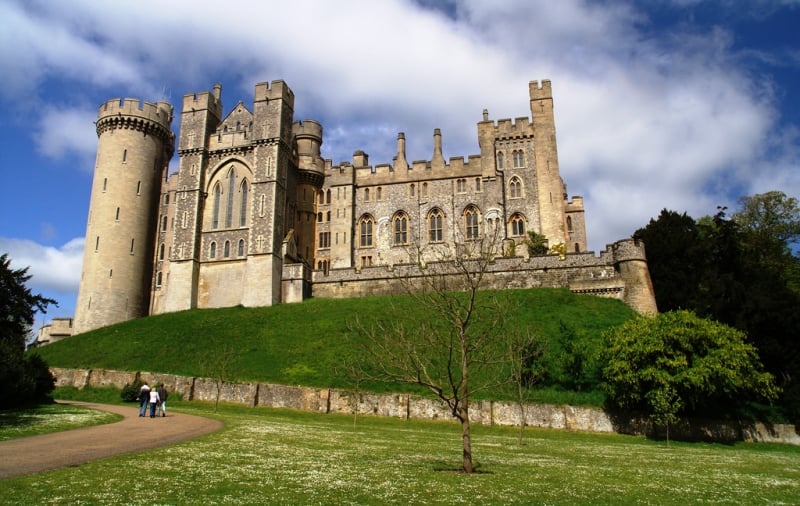
Image credit: topcastles.com
Located in West Sussex, Arundel Castle shows you what a grand medieval fortress looked like. Remodelled and rebuilt, the huge castle can trace its history back to the 1060s. There’s a cricket ground and gardens within the expansive location and there are great views across the River Arun and South Downs. Several original features, such as the Keep, Gatehouse, and Barbican remain, adding even more intrigue to the Gothic gem. Inside, there’s a large collection of art, artefacts, and tapestries, and young and old alike can have fun dressing up in period costumes.
6. Leeds Castle
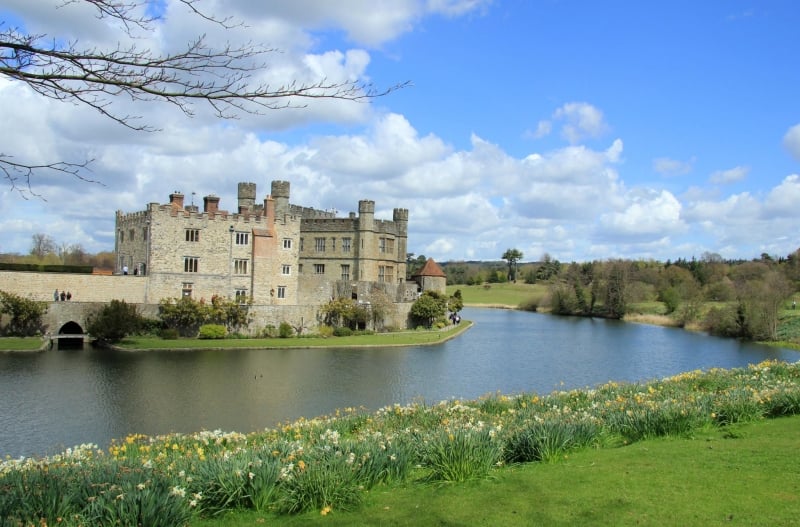
Image credit: Karen Roe
Leeds Castle can be found in Kent in southern England. Often referred to as one of the most charming castles across the globe, the old structure was once used as the home of royalty. A castle has stood in this spot since the 1080s. Visitors will see a bland of architectural styles, including Medieval and Tudor, and the site is especially impressive when viewed from across the moat. Don’t be alarmed if you have a feeling of déjà vu—the castle has been used as a filming site in a number of productions. As well as exploring the striking site, you can try to conquer the maze and enjoy a range of activities and displays.
7. Lindisfarne Castle
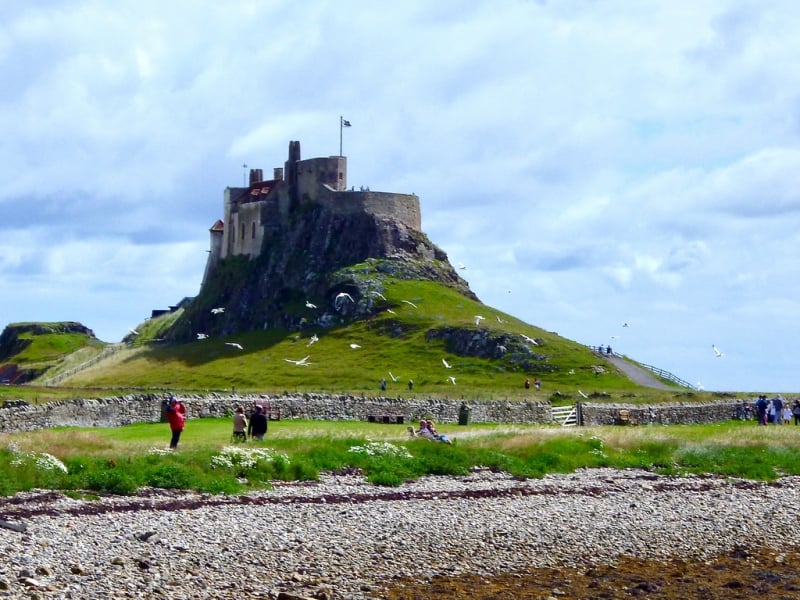
Image credit: Dave_S.
Rising up from the surrounding greenery on a small island (Holy Island) off the coast of Northumberland, the mysterious Lindisfarne Castle is completely cut off from the mainland during high tide. At low tide, however, it is possible to walk across the causeway for a closer view of the castle. Built in the 16th century, it has seen many alterations over the years. It was a project of the renowned Sir Edwin Lutyens, the British architect responsible for the planning of New Delhi and many fine buildings across the world.
8. Dover Castle
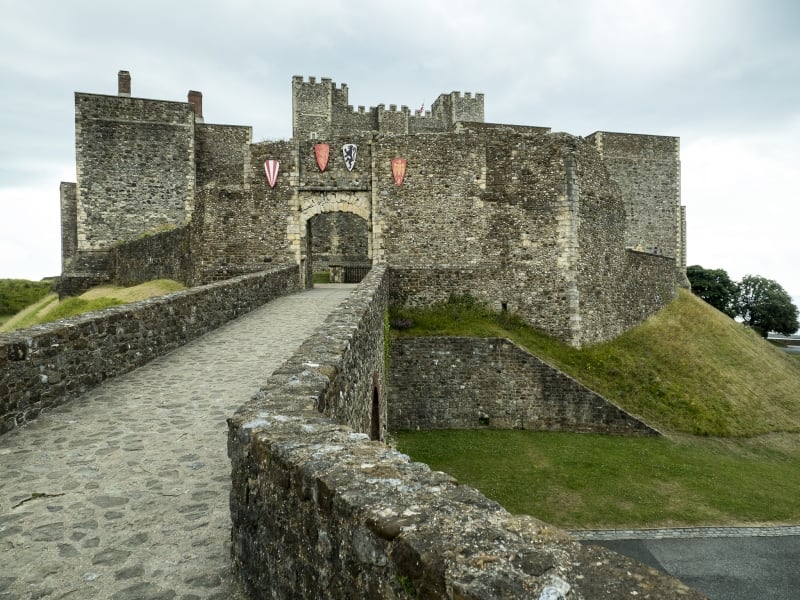
Image credit: sctkirk
Perched atop the famous White Cliffs of Dover, the 11th-century Dover Castle is a majestic vision. One of the biggest castles in England, its strategic position and strength has led to it often being known as the Key to England. The castle has seen much action over the years, even playing a role in the Second World War when parts were used as air-raid shelters, a hospital, and a command centre. Visitors can descend into the Secret Tunnels, explore the walls, see historic chapels, and more.
9. Berkeley Castle
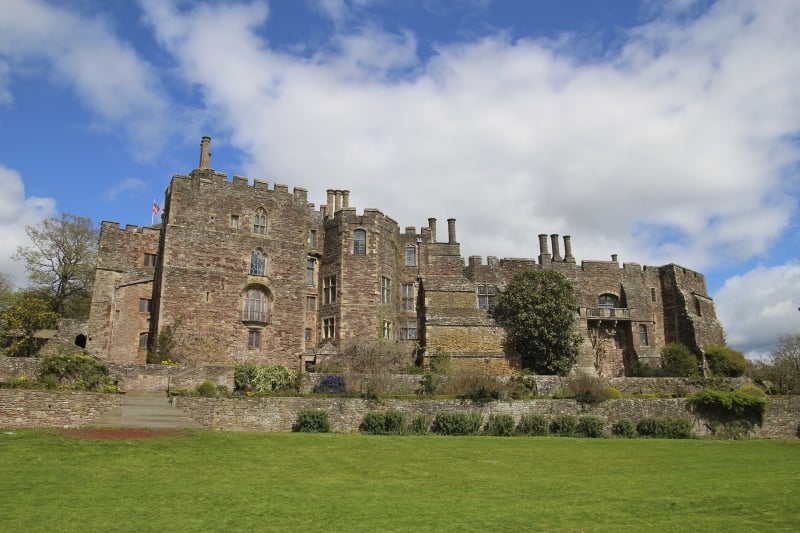
Image credit: Kathryn
Located in Gloucestershire and with a heritage that stretches back to the 11th century, Berkeley Castle is today a popular spot for grand weddings and other special events. It is closed to the public from Thursday to Saturday each week, though you can enjoy the beautiful castle on other days. Free guided tours are included in the admission price, providing fascinating insights into the building’s past. In addition to viewing the castle, it’s well worth taking the time to explore the beautiful grounds, complete with quaint cottages, gardens, a deer park, and farmlands.
10. Skipton Castle
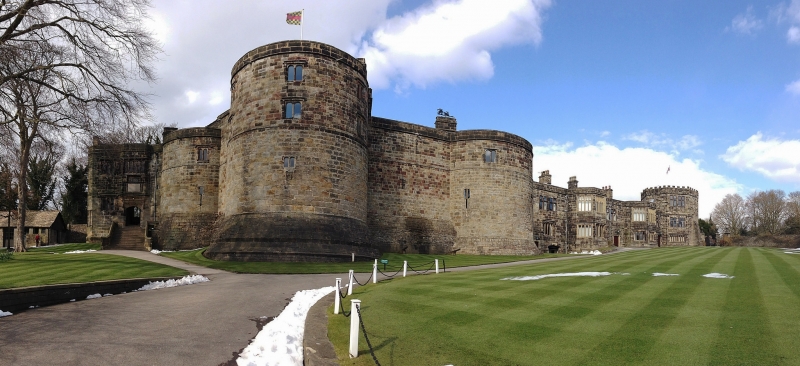
Image credit: giborn_134
Constructed in 1090 during Britain’s Norman era, Skipton Castle is a popular tourist attraction in Yorkshire. Originally built from wood and earth, it was later fortified with stone. It was the only Royalist stronghold in the north of England during the English Civil War. The castle has six towers along with the ruins of a chapel, the gatehouse with its two towers, a grotto, the original kitchen, the lavish grand hall, and many other interesting features.
11. Ludlow Castle
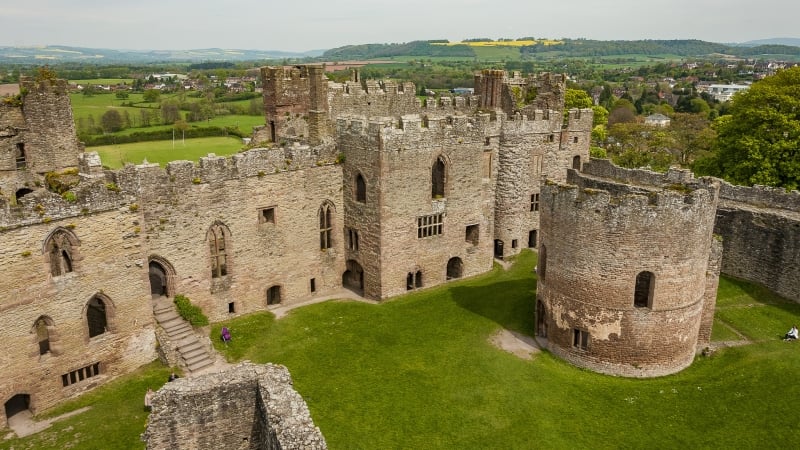
Image credit: bvi4092
Although Shropshire’s Ludlow Castle now stands in a state of ruin, the large site is still sure to take your breath away. Square towers, complete with arrow slits, rise up from imposing walls and various styles of architecture reflect the castle’s long history. You can still spot old carvings and statues. Parts of the medieval site have been reconstructed to create a fine hotel, restaurant, and shop.
12. Norwich Castle
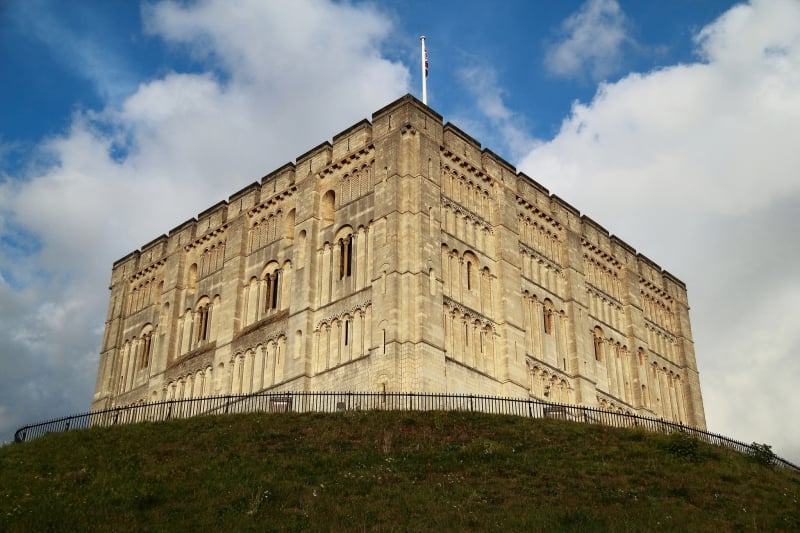
Image credit: Mark Harris
The block-like Norwich Castle was founded after the Norman invasions of Britain. Recorded in the Domesday Book of 1086, the castle stands on the site of an older cemetery from the Saxon period. It’s little wonder that ghostly tales and legends surround the historic site! Today, the castle contains an art gallery and museum.
13. Bamburgh Castle
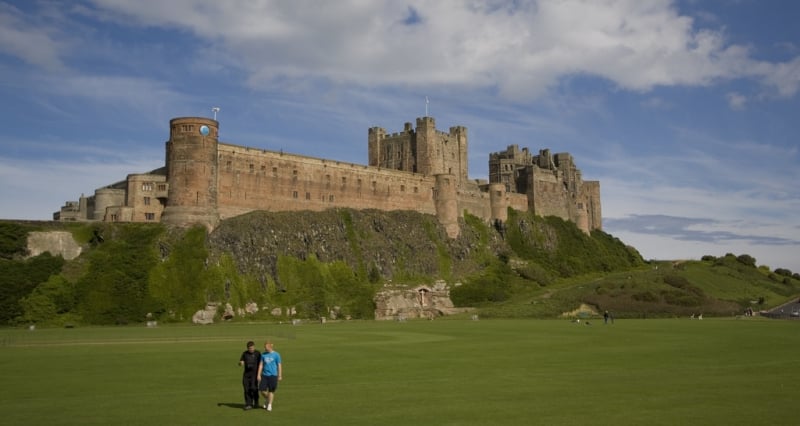
Image credit: Fr Lawrence Lew, O.P.
Bamburgh Castle is located in Northumberland, close to what was once a highly tumultuous border between England and Scotland. Indeed, the castle was built on the site of an older Celtic fortress. Several exciting archaeological finds have been made in the area. The castle is open to the public and you can visit the onsite museum in addition to learning more about the castle’s long history on a guided tour and admiring the interesting artefacts throughout the beautiful interiors. There’s accommodation at the castle too if you want to soak up the atmosphere for longer.
14. Rochester Castle
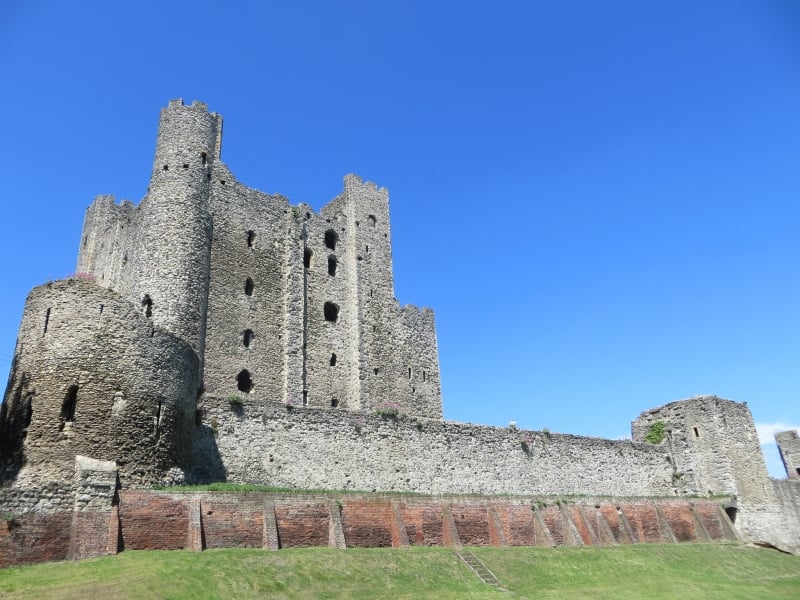
Image credit: Alex Liivet
The 12th-century Rochester Castle sits alongside the banks of the Medway River in Kent. Featuring one of the UK’s best preserved stone towers, it really is a magnificent sight. The castle has a long history of damage and repair. The Union Jack flag flies proudly from atop the castle, and the walls have small windows and arrow slits. You can also see a round tower from the 13th century. Discover the long siege held in the castle, with King John eventually flushing out rebels after a grueling two months.
15. Warkworth Castle
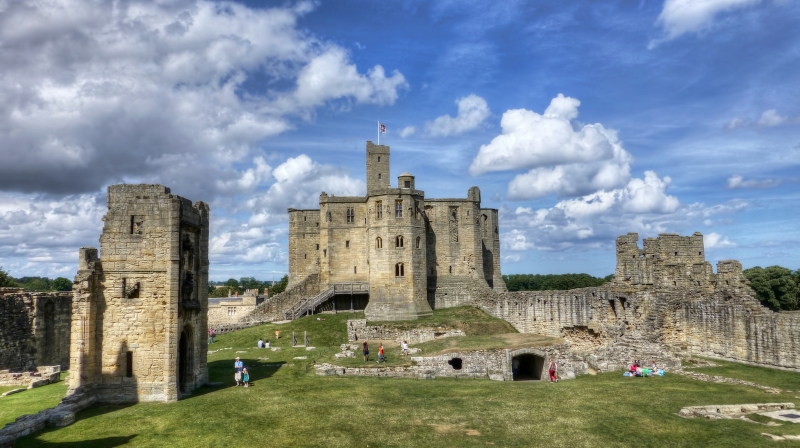
Image credit: Matthew Hartley
Located in Northumberland, Warkworth Castle is an enigmatic ruin. Perched on a hill overlooking the River Coquet, the keep is designed in the shape of a cross and the site also has a hermitage. You can discover rooms that look as they would have done in times gone by and take part in a number of cool activities. There are various displays and demonstrations too, often including things like battle reenactments, period plays, and scenes from legends.
16. Tintagel Castle
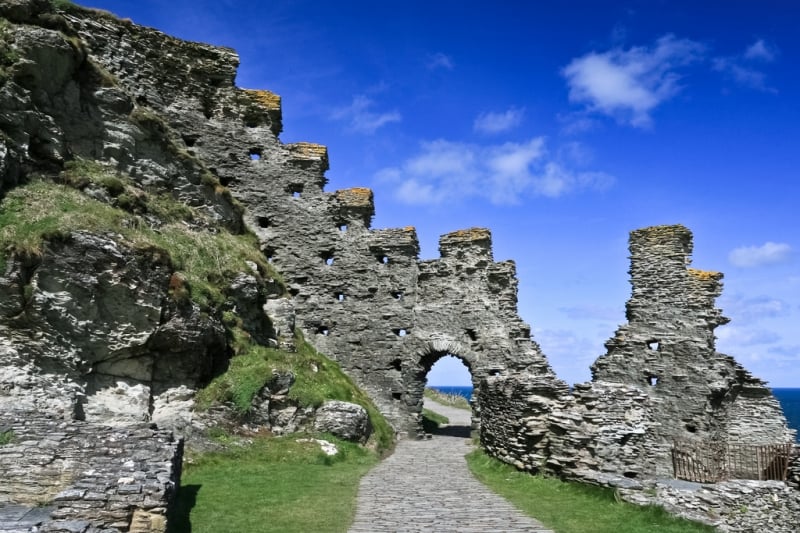
Image credit: Derek Σωκράτης Finch
Tintagel Castle almost transports you to another realm with its scenic views and sense of history. Plenty of myths surround the castle, and there are strong links to King Arthur. On a craggy peninsula near Cornwall, the castle is sure to fire up your imagination. Many archaeological finds have been discovered here, and it is widely thought that the site was occupied many years before the medieval castle was built.
17. Middleham Castle

Image credit: James Stringer
The gigantic Middleham Castle stands in a state of disrepair, its roof no longer there and many walls showing the passage of time and effects of the weather. Its ruin only serves to make it more atmospheric, though, and it’s pretty easy to visualize how grand it must have been in its heyday. Once home to the villainous King Richard III, it has also hosted many of society’s nobility and elite in the past. Construction started on the behemoth in the late 12th century, with a much older fortress close to hand.
18. The Tower of London
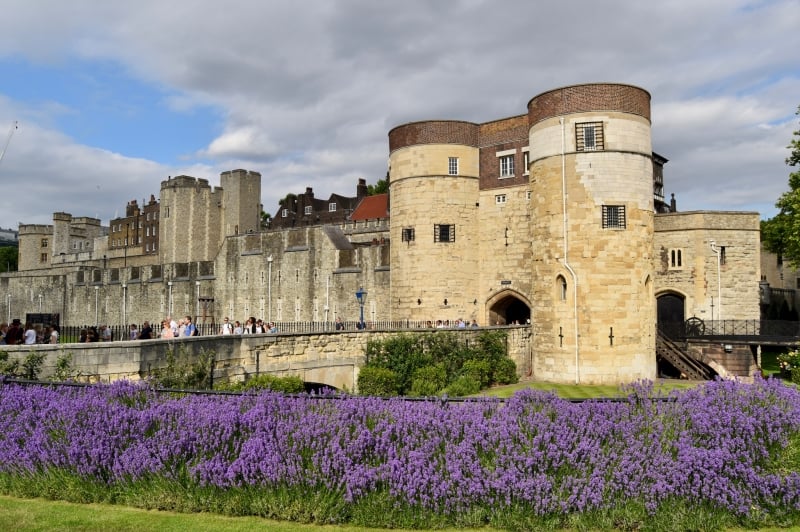
Image credit: Nick Amoscato
Famous for the Crown Jewels, Beefeaters, and Ravens, the regal Tower of London has been used for many purposes over the years. The castle has been used to protect the city, as a show of status and might, as a prison, and as a royal residence. Furthermore, it once housed a zoo, the Royal Mint, an armoury, and a treasury. Built towards the end of 1066, it sits at the side of the River Thames in Central London. The White Tower was the work of William the Conqueror. Two walls and a moat protect a number of inner buildings, although it has been besieged several times during times of trouble. Today, it is one of London’s most popular attractions.
19. Kenilworth Castle
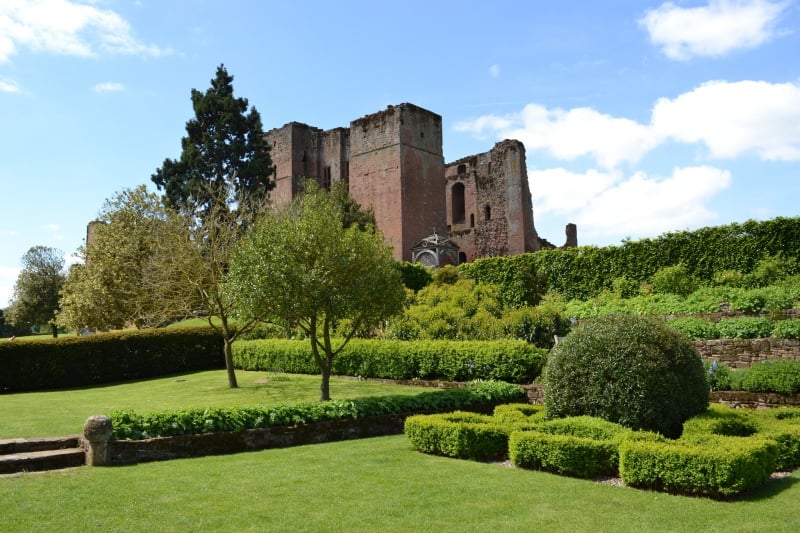
Image credit: Paul Massey
A splendid piece of architecture in Warwickshire, the expansive Kenilworth Castle was built and expanded through the Norman and Tudor eras. A number of historically important events have taken place here and it was used during the bloody Battle of the Roses. Most of the sandstone site stands in ruin today. Walk around the imposing walls, stroll through tall archways and gates, peer into dark recesses, and feel as though you’ve taken a gigantic leap back in time.
20. Bolsover Castle
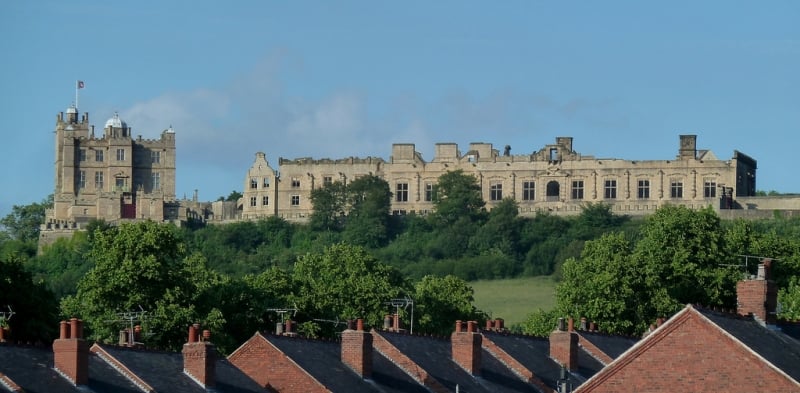
Image credit: Andrew Hill
Unlike many of England’s great castles, Bolsover Castle in Derbyshire wasn’t built as a defensive structure; it was constructed as a grand home and place for entertaining. Built in the 17th century in the Stuart style, it aimed to dazzle and impress. An older fortress once stood proudly in the same place. The grounds are pretty and provide great views across the countryside. You can walk along the walls, have fun in the gardens, tour the interiors, see a range of exhibitions, and more. It’s sure to be a fabulous day out.
If you can’t get enough of the castles in England, there’s more. Sizergh Castle, St Michael’s Mount, Alnwick Castle, Raby Castle, and Bodiam Castle are a few more highly recommended castles to visit when travelling around the region.




